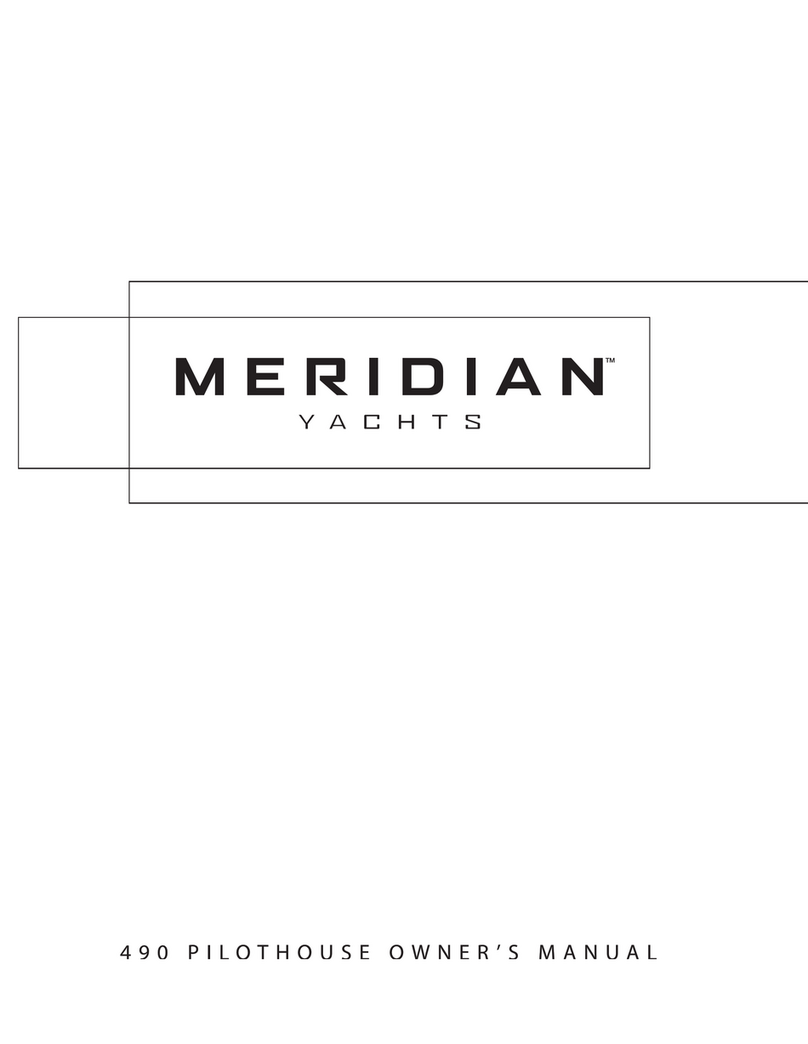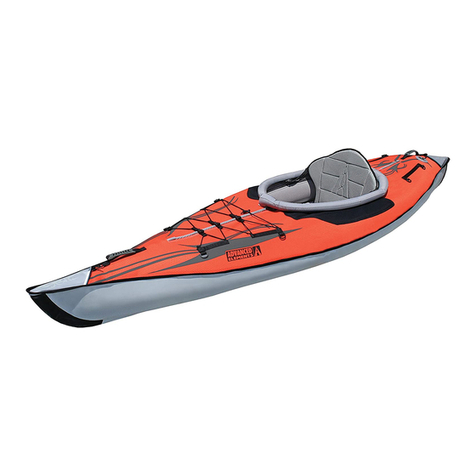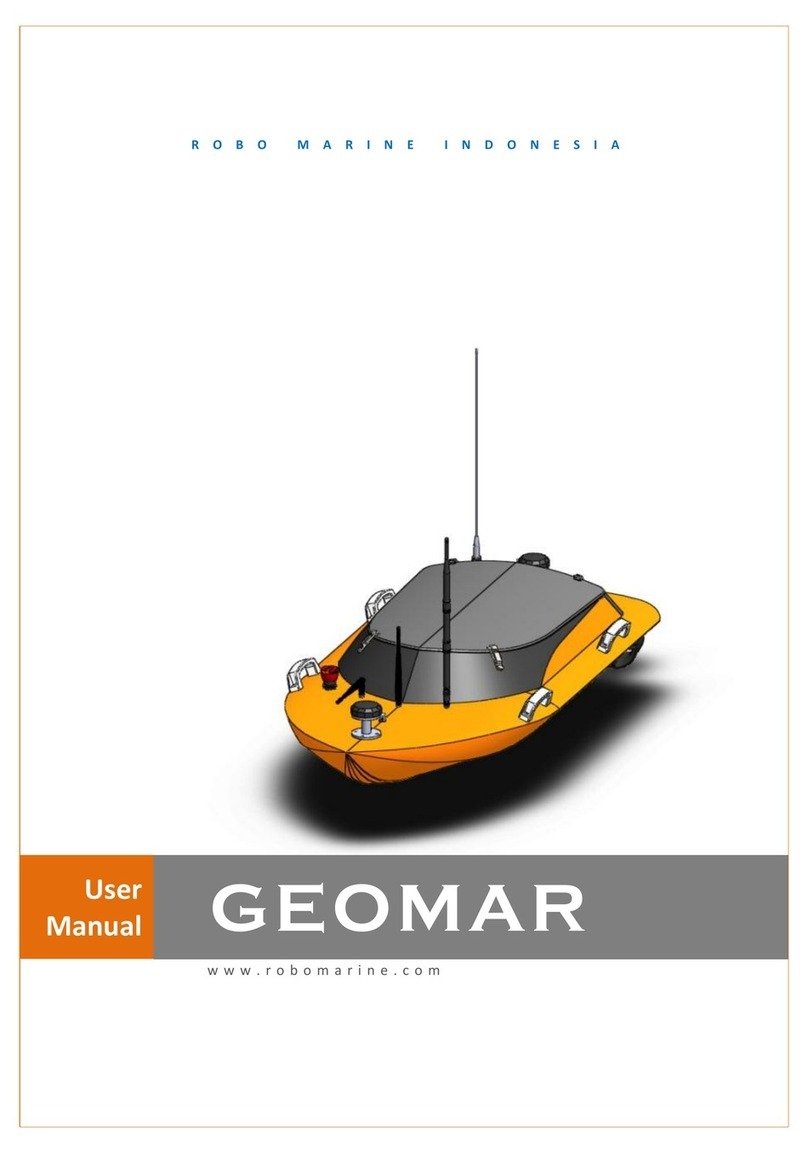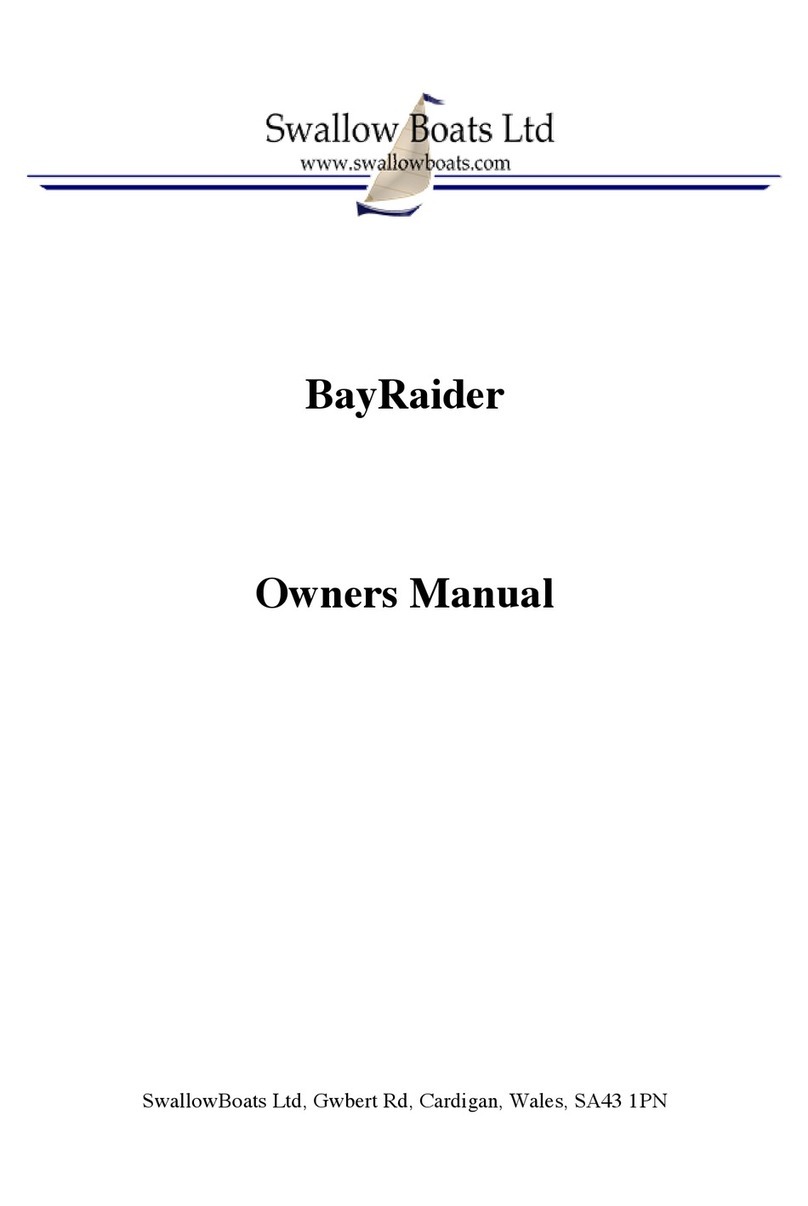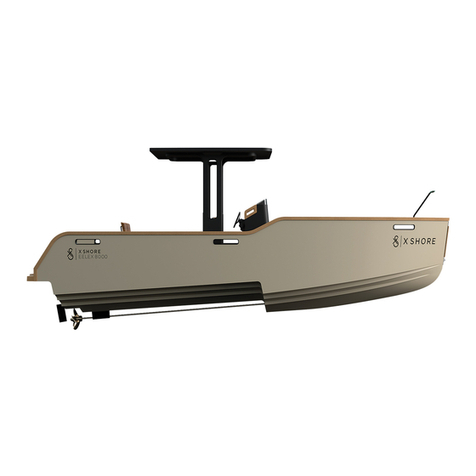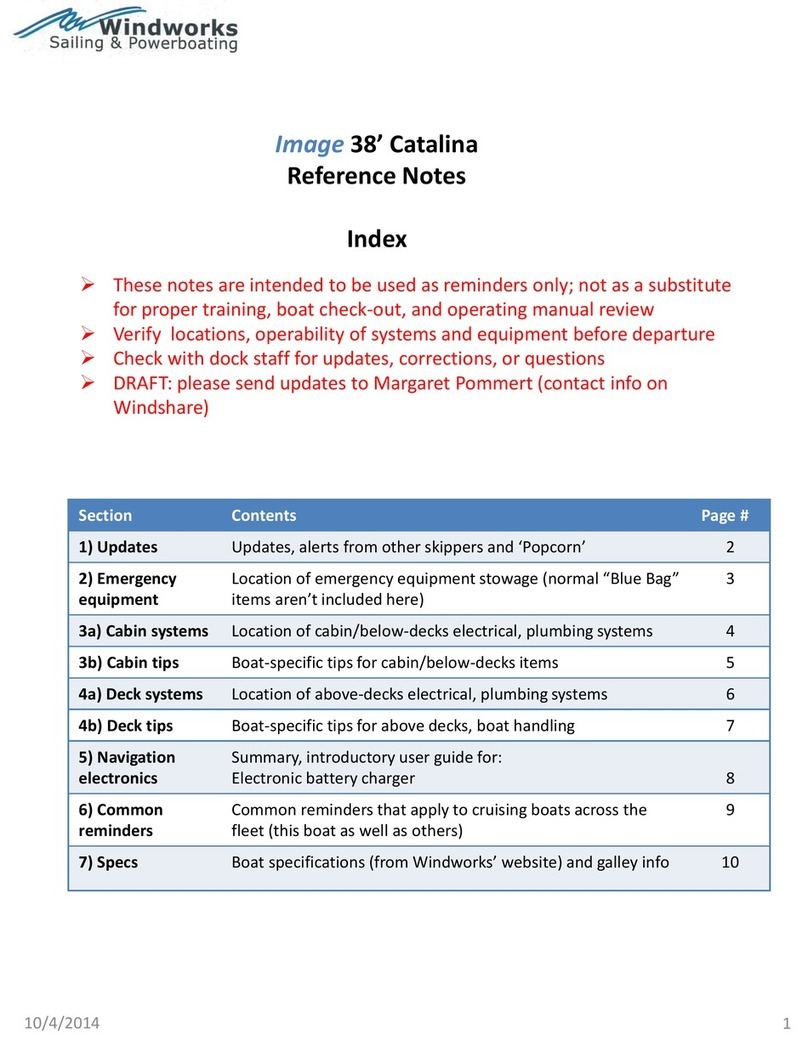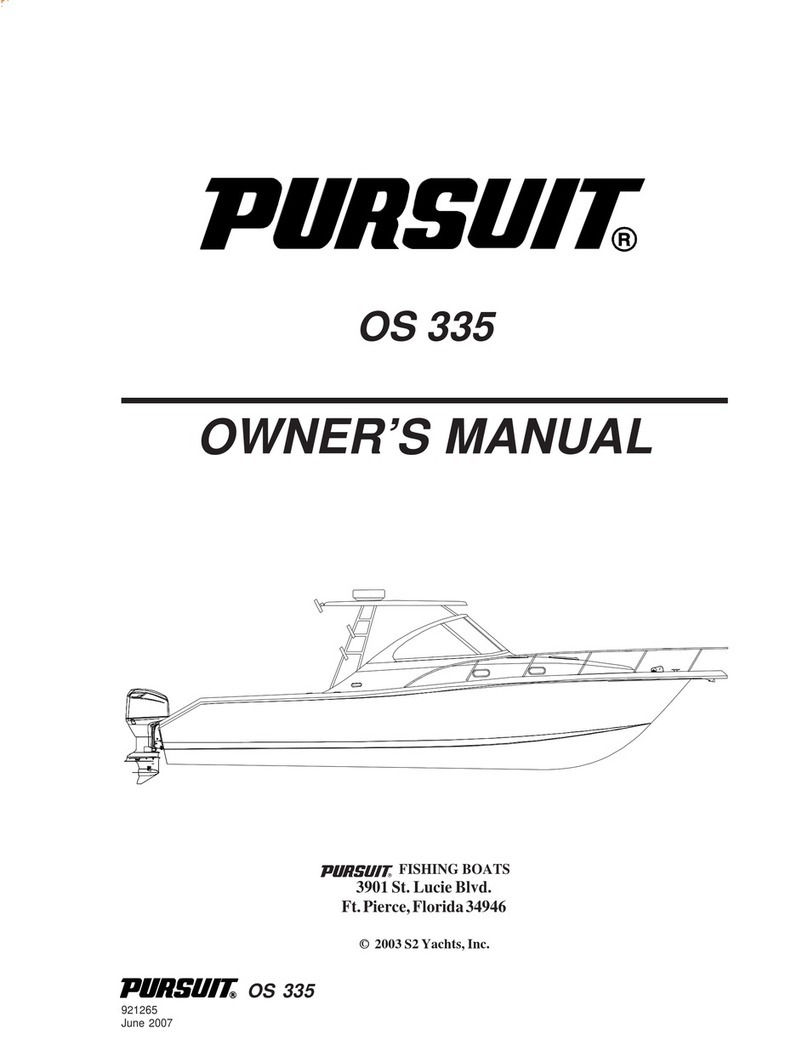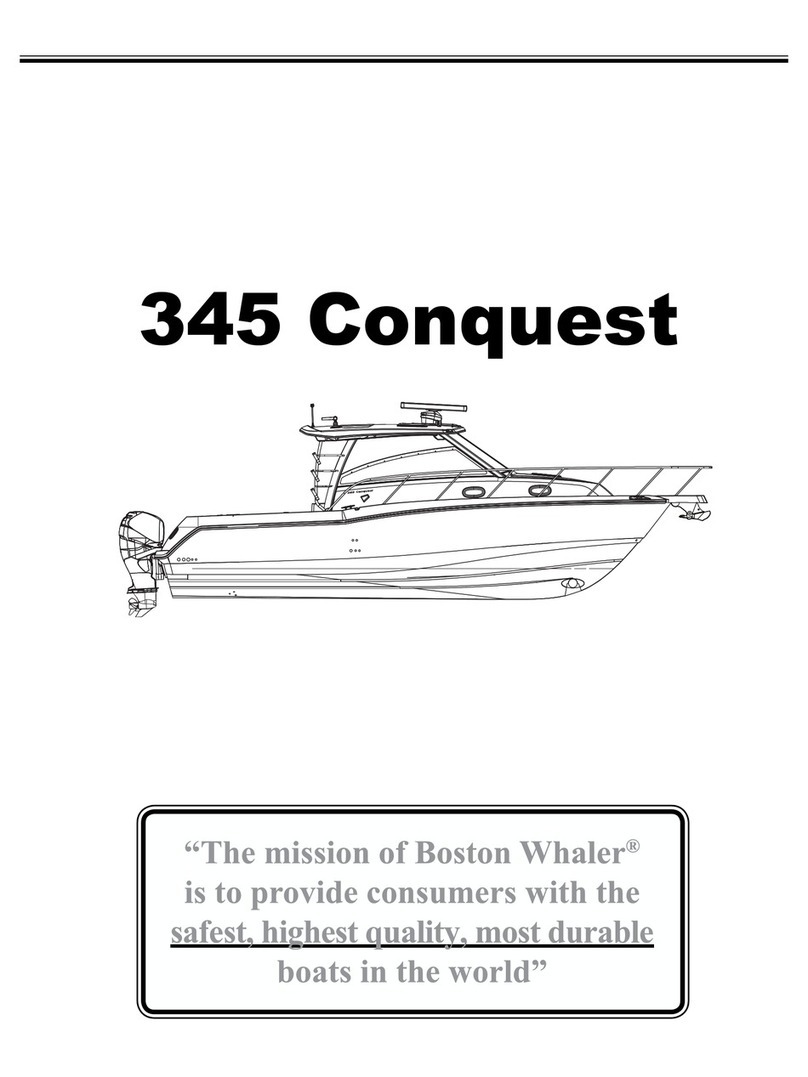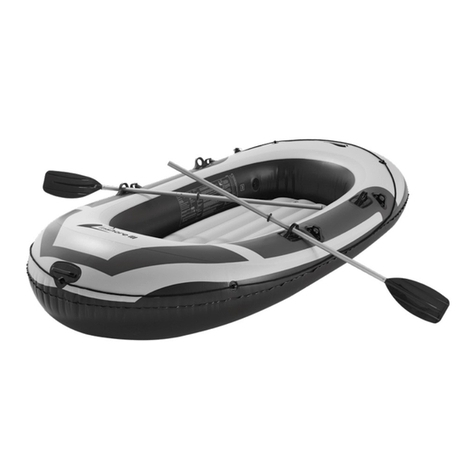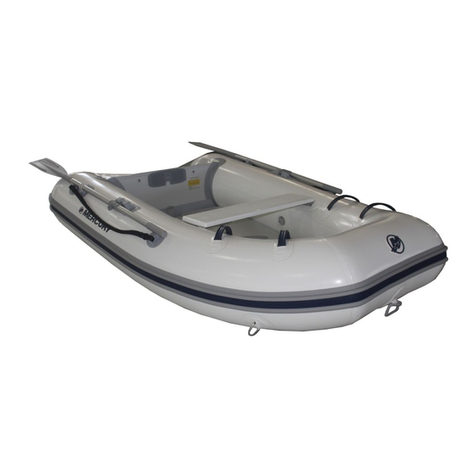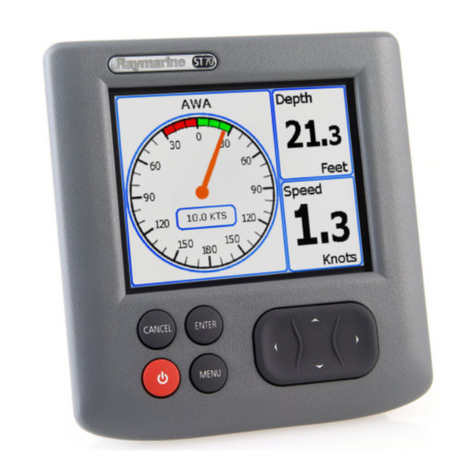Tracks should be set so that you can row with as much compression as you need but no more than that
to minimize track bite. To move the tracks fore and aft, reach through the hatch and loosen the plastic
wing nuts that are 16 inches apart on either side of the hatch. Slide the tracks to the best position and
retighten the wing nuts. If the wing nuts just won’t budge, we can send a small “wrench” that will help to
grab them.
Carrying and storing
The Peinert 25/26 is very sturdy. However, it is best not to over stress the skin of the boat where it is not
directly supported by the internal frame. In moving or storing the boat avoid putting great pressure on any
one point of the flexible parts of the hull or deck.
The Peinert 25/26 can be picked up in several ways. The easiest is to grab the handle on the bulkhead
between the platform and the footwell with one hand and to grab the crossbar of the rigger with the other.
You may also grasp both sides of the washbox at the balance point (just to the bow of the handle). You
can also reach under the hull and cradle it at the balance point. Like all singles, if I need to carry it more
than a few steps, I find it easiest to carry upside down, platform resting on the top of my head, one hand
holding the rigger in front of me for fore and aft trim, the other hand holding the edge of the washbox for
sideways trim. You can also put boat at a diagonal with the edge of the washbox resting on your shoulder
and the platform leaning over your head.
Note- it is better not to carry the boat with the hull on the point of your shoulder as this may put too much
pressure on a single point of the single skin hull.
Two people may carry the boat, each holding it wherever convenient at their end of the boat.
For any kind of regular or long-term storage the boat should be supported in two places. about eight to
eleven feet apart, which works out to just ahead of and just behind the washbox. Do not store your
Peinert 25/26 supported at the very ends, balanced on the middle, or sideways (anything not hull straight
up or straight down). On a rack, upside down (hull up) is more stable and the best choice. Make sure that
the boat is squarely on the center of the deck so that the deck does not hinge over the interior frame. A
good way to do this is to keep it on 3 points, with one support on the deck and the other on the bow or
stern end of the washbox. The boat can also be slung in overhead straps or sit on slings. Hull up is best
unless it is inside where rain and debris will not collect in the cockpit and be careful that the slings cannot
blow over when the boat is in them.
For storage or transport the Peinert 25/26 can sit on the washbox or on the centerline of the deck or hull
anywhere from the bow end of the frame to the stern end of the frame. The bow end of the frame is
located at the slight bump in the middle of the deck, the stern end of the frame at the stern end of the fin -
you can feel through the deck where the frame ends.
The washbox of the Peinert 25/26 is more than strong enough for the boat to be transported on your car
resting upside down with the washbox on your conventional roof racks. It may be helpful to use some
stops on the front crossbar to stop the boat from slewing side to side at speed. Just be sure the racks are
securely attached to the car and tie the Peinert 26 to the racks with rope, straps or some other secure
method of fastening. The ropes or straps should be tight but not so tight that the hull starts to deform.
Almost all the commercial boat carriers will also satisfactorily carry the Peinert 25/26, just be careful not to
put point loads on the hull.
Note- there are more detailed instructions with diagrams on the peinert.com website under the FAQ tab.

